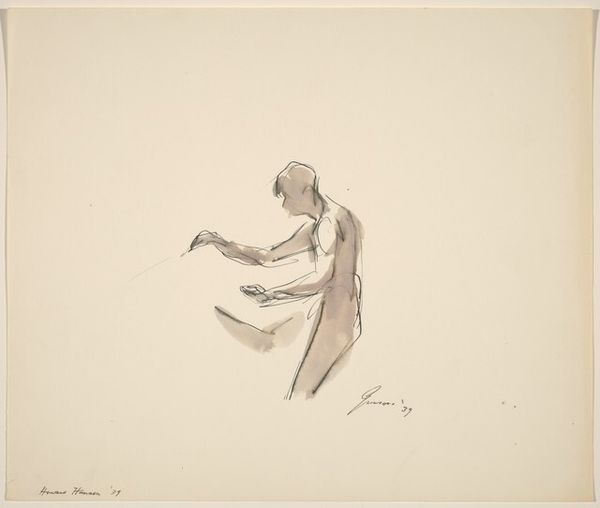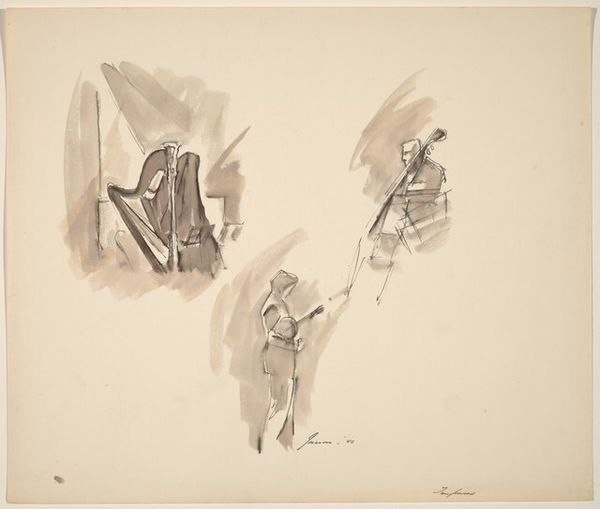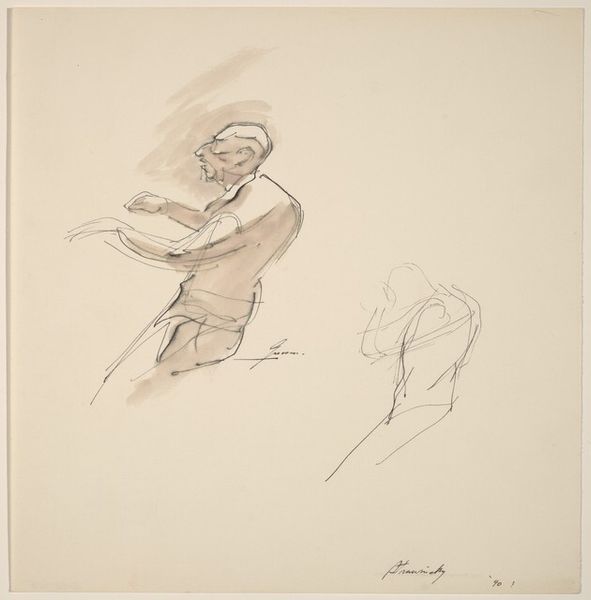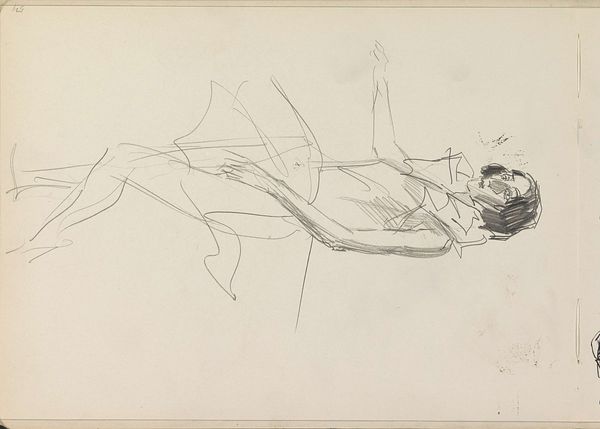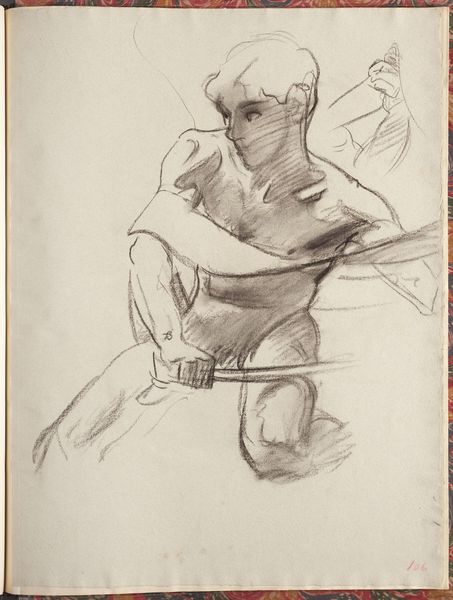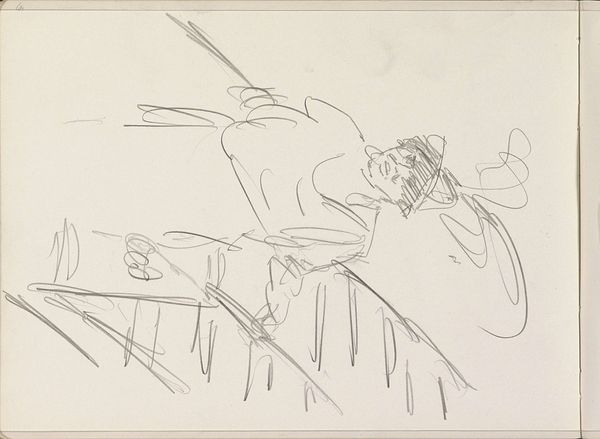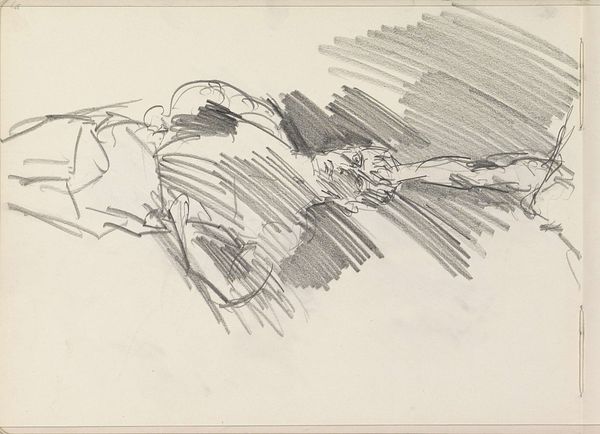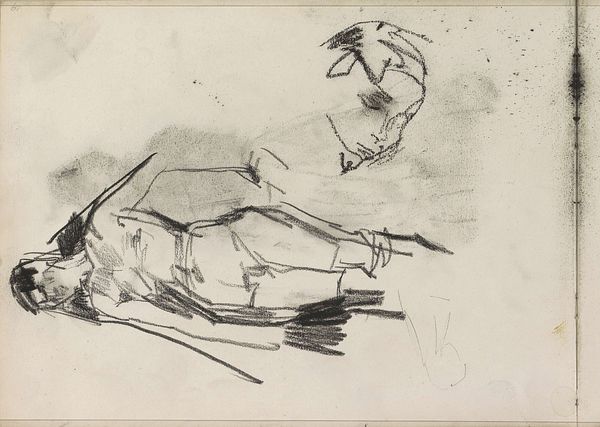
drawing
#
drawing
#
abstract painting
#
ink painting
#
possibly oil pastel
#
fluid art
#
acrylic on canvas
#
ink drawing experimentation
#
underpainting
#
watercolour bleed
#
watercolour illustration
#
watercolor
Dimensions: overall: 24.1 x 29.4 cm (9 1/2 x 11 9/16 in.)
Copyright: National Gallery of Art: CC0 1.0
Editor: This is Donald Greason's 1963 drawing, "Van Cliburn at Tanglewood." It seems to be created with ink, and the style feels very immediate and sketched. What strikes you most about it? Curator: I’m drawn to how the artist uses the materials available, seemingly prioritizing economy of line and wash over a traditionally "finished" aesthetic. This isn’t simply a portrait of Cliburn, but a document of the artistic labor, the very process of capturing a fleeting moment. Editor: I see what you mean. It’s almost like we are seeing the artist’s train of thought. Why choose to foreground the act of drawing itself? Curator: Think about the social context. Tanglewood was a significant cultural hub, a space for both elite artistic performances and more democratic access to music. By using relatively accessible materials and a rapid, sketch-like technique, Greason is flattening the hierarchy between "high art" and the more workaday practices of drawing and illustration. He is emphasizing the creation process rather than a precious final product. What do you make of the tonal washes he's used? Editor: They’re interesting – almost abstract. It blurs the boundary between representation and pure mark-making. Do you think that contributes to your idea about leveling hierarchies? Curator: Exactly! It suggests that the *making* is perhaps more significant than the image itself. Consider also the context of the 1960s. There was a growing interest in process-based art across various media. Artists began challenging the idea of art as a commodity, a static object to be consumed. This drawing participates in that wider cultural shift. Editor: That’s a very interesting perspective. I initially saw it as a simple portrait sketch, but understanding the social context and material choices really opens it up. Curator: Precisely. The focus on materials and method of production enables us to move beyond traditional aesthetic appreciation and engage with the cultural meaning embedded in artistic choices. It allows us to see art not just as image, but as labor. Editor: I've certainly got a lot to think about regarding what actually makes something "art," then!
Comments
No comments
Be the first to comment and join the conversation on the ultimate creative platform.
